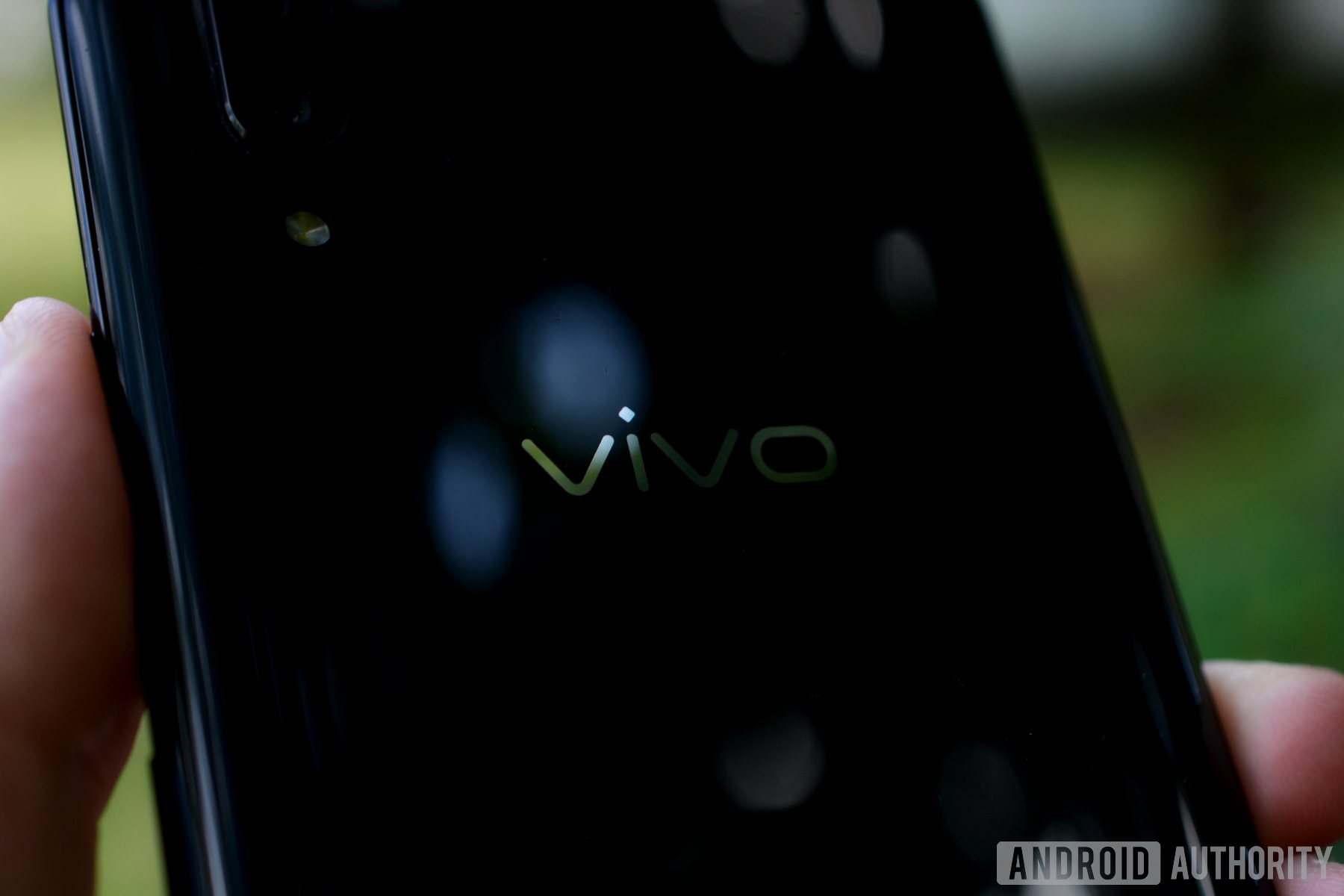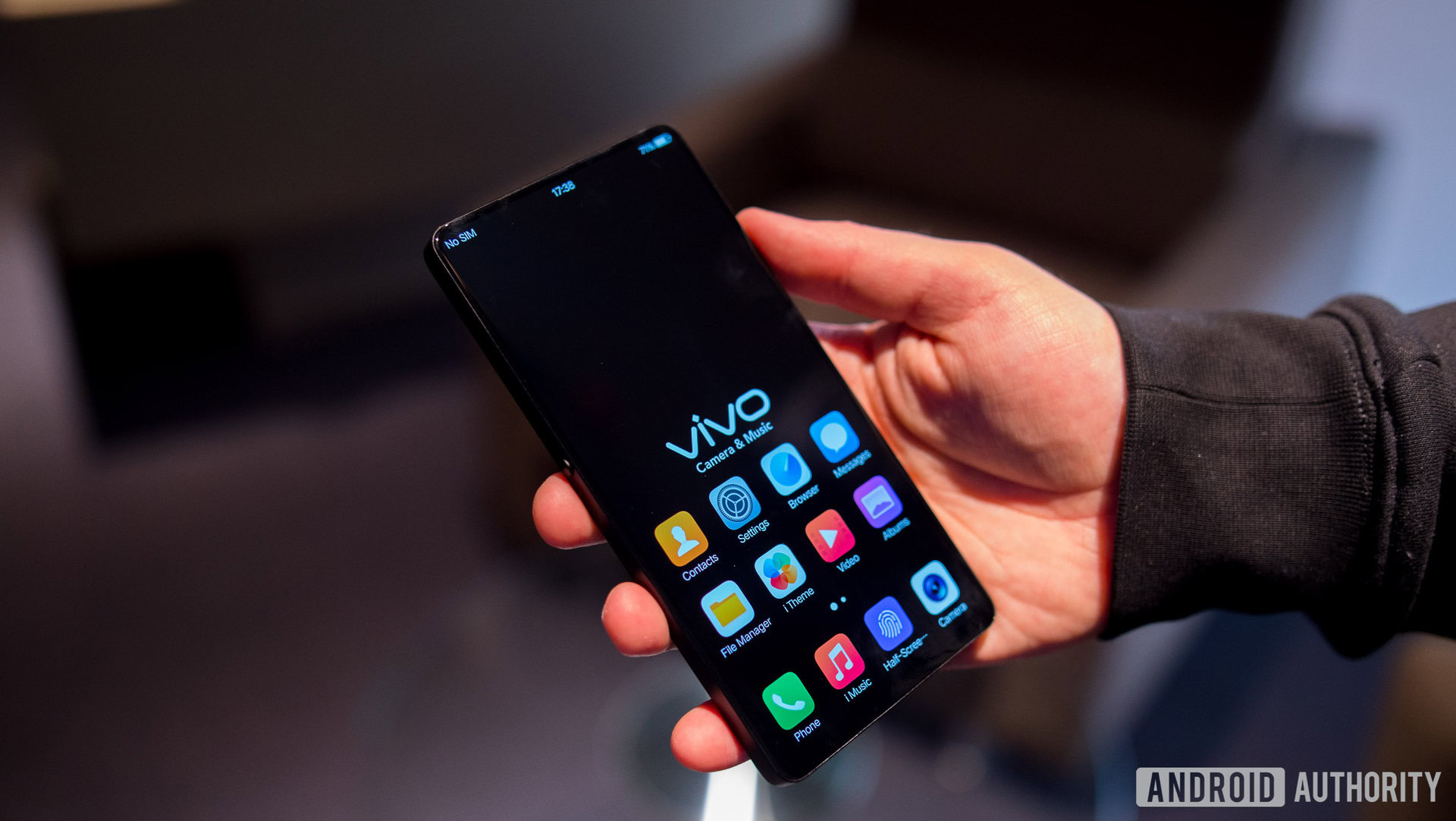Affiliate links on Android Authority may earn us a commission. Learn more.
What is NEX? How vivo could achieve the bezel-less dream
Published onJune 8, 2018

This sponsored post is brought to you by vivo.

Remember the good old days when we got excited every year about the next world-changing innovation in smartphones?
It feels like a long time ago. Today we’re stuck with increasingly derivative designs that have lost that feeling of stepping into the future we used to expect. Almost every new phone in 2018 is copying that polarizing display notch that nobody asked for. Innovation, it seems, has been replaced by compromise and an acceptance of almost a single unifying aesthetic.
Read Next: vivo V9 review: An iPhone X clone with AI selfies
One exception to this 2018 rule of smartphone design is vivo. A couple weeks ago vivo teased a new phone in its FIFA TVC commercial, hinting that we’re closing in on an exciting consumer launch date. This phone looks like it’s taking a huge departure from what we know as phones now and instead shows what you can do with just a screen in your hand. The company has previously told us to save-the-date on June 12, so we’re tantalizing close to this years’ most original smartphone launch.

What’s just surfaced is a teaser with a hint of a new name: NEX. If the NEX shown in this teaser is as bezel-less as the rendering, we’ll opening up that space for a brand new smart phone trend. The next page of smartphone design – a page without a notch.
Why does the notch even exist?
Smartphone manufacturers have their work cut out for them when it comes to meeting the somewhat contradictory demands of today’s high-end users. We want better selfie cameras, more powerful front-facing speakers, along with fast fingerprint scanners and enhanced security, yet all this has to fit on a phone along with a bigger display and without an increase in size or weight. That’s a tough formula to crack.
The notch is seen as somewhat of a solution, maximizing the screen-to-body ratio while the cutout leaves enough space to house the essential camera and speaker components. However there’s only so large a speaker and camera sensor that you can house in a notch, not forgetting all the other sensors that have to be crammed up there too. The notch also hasn’t solved the security issue either. Smartphones fingerprint sensors are increasingly appearing on the back in tough to reach places to save on screen space, but every other interaction happens on the front of a phone.
These aren’t really answers to the problem, they’re merely compromises.
Going outside the box
Proper solutions require much more innovative thinking, an R&D department and budget to back it up, and an appetite for a little risk. And vivo certainly has an appetite for innovation. vivo has a history of rejecting the “norm” and taking risks to explore brand-new solutions with the commitment for true innovation.
1. Breaking the norms of the fingerprint sensor.

In an effort to get more space for the screen, the smartphone industry has decided that the only way is to move the fingerprint sensor to the rear of the phone or ditch it entirely. Not for vivo. They were the first to develop and mass produce In-Display Fingerprint Scanning Technology.
The In-Display Technology used by vivo has evolved quickly this year. The first demonstration we saw was at CES 2018 where vivo showed off the world’s first ready-to-produce smartphone with the In-Display Fingerprint Scanning Technology, quickly followed by the first commercial phone with the technology in the X20UD, and the first one launched in global markets in the X21. At MWC Barcelona 2018, vivo even showed a Half-Screen In-Display Fingerprint Scanning Technology in the APEX FullView Concept Smartphone, showing clear leadership in this space as the rest of the industry scrambles to catch up.
2. Making a new home for the front camera.
The industry has long thought that the front camera fights the screen or bezels for space. Some have put it to the chin of the camera to defeat the notch. vivo decided to just put it inside the phone itself, with an Elevating Front Camera that pops up whenever you need it. We’ve seen this in APEX and they have just showed if off in their latest TVC hinting this may be on the upcoming product.

That doesn’t make it a simple piece of engineering. Space inside our thin smartphones is at a premium, so vivo has had to optimize interior space to make room not just for the camera sensor, but also for the mechanical elements and camera housing.
3. vivo ditches a convention as old as phones themselves.
An ear piece has always been part of the “phone”. Those holes that blast the dialogue into your ears have been the status quo since the oldest telephones up till now. Leave it to vivo to say, nope, ditch the old tech. vivo does away with the earpiece on the APEX and uses the screen to produce the sound instead. The entire display works as a speaker by sending vibrations through the screen, yet does so while also rivalling traditional speaker quality.
Conclusion
Vivo’s technologies have shaken up the status quo and provide new ways to look at the aforementioned design demands without having to compromise.
The vivo APEX and its related core technologies have set out to solve the issues associated with the bezel-less dream, but it’s one thing to showcase a concept and another to bring a working product to market. Yet vivo seems to be ready to take on this challenge in a way no one else in the industry is doing.
They have us stoked for the NEX to see how vivo will create the new future and maybe even a new series. Where do we go if science fiction becomes real?
After seeing that teaser, how do you think the NEX could help the industry to break away from the notch and embrace truly bezel-less designs? Which of vivo’s latest technologies do you think is the most impressive?